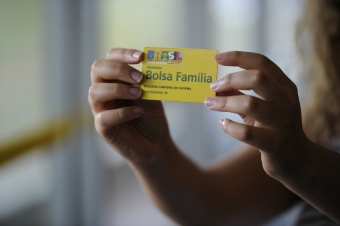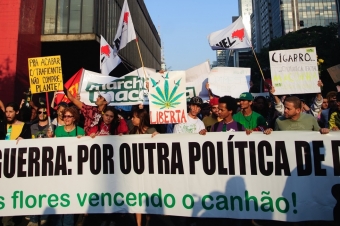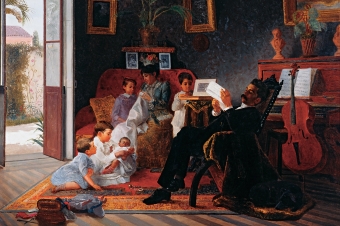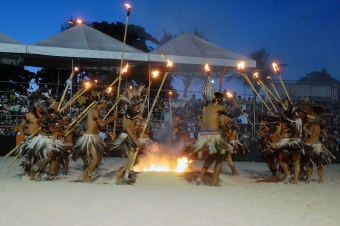Summary:
It is an activity in which the students go to different prison systems and know the facilities of the visited places, performing a socioeconomic questionnaire with inmates and/or directors, who are employees of the institution. Later, they prepare a report with what they saw, interviewed and read the chapter and delivered the report to the three (3) professors involved in the activity. Finally, the groups present descriptively the visited place, making it possible, that all may know the establishment visited and they discuss about the theory and practice.
Objective:
- GENERAL GOAL: the project provides an integrated academic environment between faculty and students through the discussion of the studied theories in the disciplines of Criminology, Economics applied to Law and Constitutional Law. It allows the student to know the theory and the reality about the crime, knowing the socio-economic profile of the people who are incarcerated.
- SPECIFIC GOAL: with the visit to the prison system, it is intended to:
a) Enable the humanistic formation, technical and legal , essential to the proper interdisciplinary understanding of the criminal phenomenon, legal and of the social transformations;
b) Allow ethical and professional sense, associated with social responsibility with an understanding of causality and purpose of the criminal phenomenon and of the constant search of the man liberation and the improvement of society;
c) To know its regional ambience, interacting with national and international;
d) Seizure capacity, critical transmission and creative production of solutions for crime, coupled with logical reasoning and awareness of the need for continuous updating;
- DEVELOPED ABILITIES: with the visit, it is expected that students can:
a) analyze and understand the etiology of crime to inform society about the criminal phenomenon, aiming the prevention and reduction of quotas of violence;
b) the ability to solve problems and search harmonious solutions to the social requirements, elaborating projects that aimed the reduce of delinquency, violence, rehabilitation of marginal, especially promulgating forms of effective crime prevention;
c) Ability to raise awareness of national problems and have a globalized view of the world;
d) Commitment to promoting social programs to the prison community (inmates, policemen, clerks, jailers, lecturing production of booklets, giving assistance to prisoners’ relatives) and citizens from different social castes, aiming the prevention of delinquency.
Dynamics:
- TEACHING METHOD: seminar research through presentation of results to the technical prisons visit.
- REQUIREMENTS: in relations to students, there was a previous reading of the chapter "Prison and marginalization", of the book "Criminologia Crítica e Crítica do Direito Penal”, by Alessandro Baratta. In the constitutional law class it was held an approach on Human Rights and analysis of the Article 5 of the Federal Constitution and at the Economics class there was a theoretical analysis of the social economic context.
- DYNAMICS: The activity began with a meeting of two hours before the visit to the prison system, in which the professors involved have prepared students for the visit. The students were divided into groups and to them it was passed a guideline of the directed questionnaire (Attachment 1).
The students visited the prison system units of Minas Gerais. Subsequently, they drew up a report on what they saw, interviewed and read the chapter and delivered it to the three (3) professors involved in the activity. In the criminology class, the groups presented descriptively the visited place, making it possible, that all might know the establishment visited and would discourse about the theory and practice.
Each group exhibited at the seminar, in at least 15 (fifteen) minutes, the place visited and the group perceptions/critiques on the theoretical context of the classes of Criminology, Constitutional and Economics. It the end, the Criminology professor spoke about the penal justice system and reinforces the theory studied - prison and marginalization.
- ATTENTION IN THE CLASSROOM: it is essential to create reports for prison offices to facilitate the respective students’ visits and orientation and for the preparation of the questionnaire and the seminar. If in the day when the group arrives at the establishment, they cannot interview the inmates, for example, because that day they are having internal procedure (inspection) and/or riots, the group should direct the questionnaire to the staff of the establishment about the socioeconomic profile of the inmates. Thus, they will "determine", find out about the reality of the visited system.
Evaluation:
- GRADE EVALUATION: individual report evaluation made by his group through the instrument called governance, objectivity and clarity in the presentation of each group (Attachment 2).
Observation:
Copyright from the cover page image (cropped):
Image: "Alcatraz Prison San Francisco (d block: isolation)", 2009, available by the Flicker user "Gary Bembridge", under the Creative Commons BY 2.0 license.







